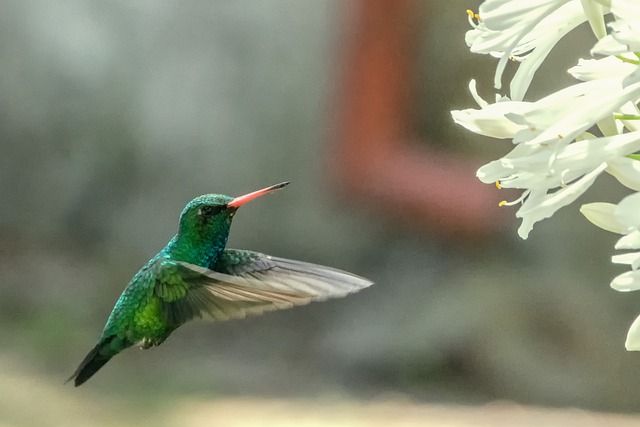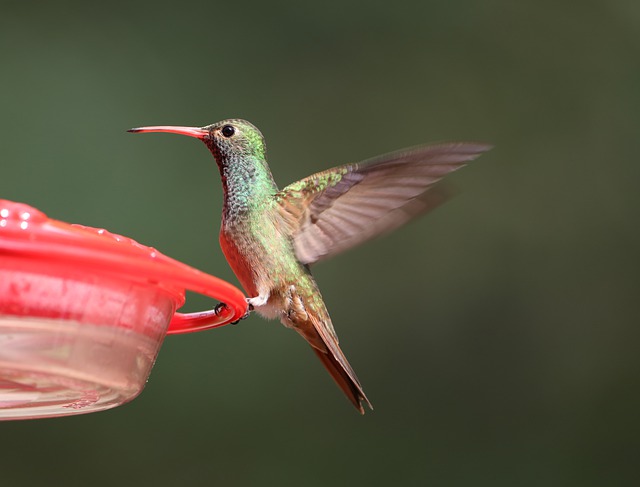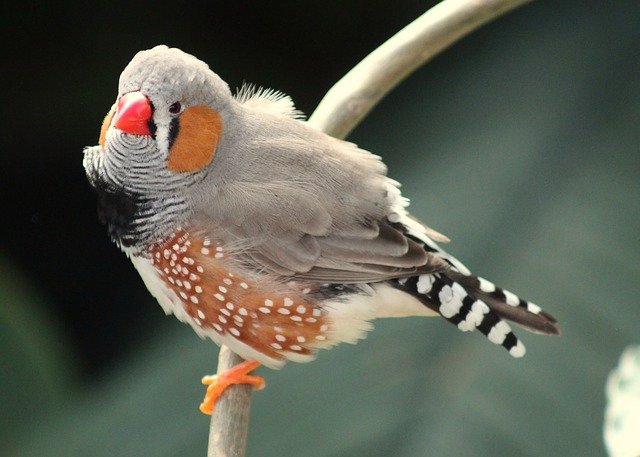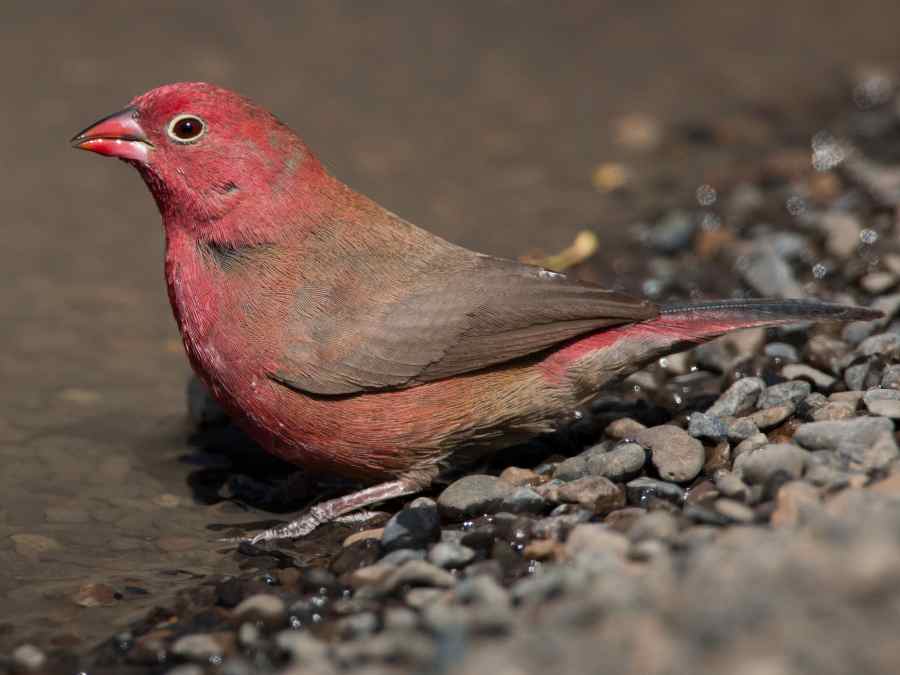Birds are spread all over the globe, ranging from big to small, most being able to fly yet others can’t and even those that can swim.
Although all these variations would allow for multitude of unique posts listing them, this one in particular will go over 7 small birds that with red beaks as that probably why you here right?
- Northern Cardinal
- Broad-Billed Hummingbird
- Buff-Bellied Hummingbird
- Zebra Finch
- Common Crimson Finch
- Red-billed Firefinch
- Scarlet Honeycreeper
Without further a do, I’ll kick it off with number 1.
1. Northern Cardinal (Cardinalis Cardinalis)

- size – 21 – 23.5cm
- weight – 43 grams
- lifespan – 3 – 5 years in the wild (upto 15 years)
Northern cardinals, also called the common cardinal and redbird are songbirds completely coated in red feathers with a patch black feathers on its along with its sharp, small red beak. These small birds have mohawk like feathers at the top of their skulls and are known for representing luck, manifestation, devotion, setting boundaries, loyalty, and domestic harmony.
These small birds can be found in the south-eastern Canada, eastern United States which includes Maine, Minnesota and Texas. Northern Cardinals can also habituate Mexico, Belize, and Guatemala.
2. Broad-Billed Hummingbird (Cynanthus Latirostris)

- size – 8.25 – 10.2cm
- weight – 3.3 grams
- lifespan – 3 – 5 years in the wild (upto 14 years)
Broad-billed hummingbirds are recognised through their turquoise green feathers along with their long and sharp red bills.
These small migratory birds are normally found along streams in canyons that are below 6,500 feet of elevation whilst they do consume that sweet ol’ nectar in canyons and mountain meadows as high as 9,800 feet once they’ve completed the long journey south. Broad-billed hummingbird generally reside in Mexico and southwestern United states.
As a result of sexual dimorphism males have a vibrant blue chest whilst a females feathers are an emerald color. Juvenile broad-bills will look like the females before males in particular molt to coat themselves in the more vibrant turquoise color they’re known to have.
3. Buff-Bellied Hummingbird (Amazilia Yucatanensis)

- size – 10 – 11cm
- weight – 4 – 5 grams
- lifespan – 3 – 5 years in the wild (upto 11 years old)
Buff-bellied hummingbirds are recognised by their emerald green throats, brown tail feathers and of course their long and pointy red bills.
They often reside within the border of Mexico and southern United States, feeding at suburban gardens, mesquite brushlands, and river corridors of South Texas.
This hummingbird is known to aggressively defend their feeding spots which places them among the more aggressive hummingbirds out there, is similar to the other more known aggressive hummingbird, the Roufous.
4. Zebra Finch (Taeniopygia Guttata)

- size – 10 – 12cm
- weight – 10 – 16 grams
- lifespan – 2 – 5 years in the wild (upto 10 years)
Zebra finches are recognised most by their zebra patterned feathers, orange cheek feathers and its thick triangular red beaks.
These tiny birds are amongst the most common cage bird in the world and have been so for the last 100+ years. Zebra finches also mature really quickly capable of bond pairing and even breeding when only 80 days old!
In the wild they are the most common estrildid finch and are located in most of Australia only avoiding some parts of the tropical far north and the moisture rich southern Australia.
Zebra finches are also native to Indonesia and east Asia whilst they were recently introduced to USA, Brazil and Puerto Rico where they are now thriving too.
5. Common Crimson Finch (Neochmia Phaeton)

- size – 13cm
- weight – 10 – 13 grams
- lifespan – 4 – 7 years
Crimson finches, as their name would suggest are small and bright red finches who also happen to have a stubby triangular red beak.
They are native to Australia with the more common black bellied variants found in the coastal areas of Australia from the tropical north’s, stretching inland. The less common white bellied crimsons can found living in Cape York Peninsular up into New Guinea
A crimson finches diet consist of green foods like chickweed and milted seeds to mealworms and fruit flies in preparation for breeding season.
6. Red-billed Firefinch (Lagonosticta Senegala)

- size – 10cm
- weight – 9.2 grams
- lifespan – 4 – 7 years
Red-billed finches, also referred to as the Senegal firefinch, are dimorphic meaning the males and females look slightly different from each. Males are almost entirely red with brown wings and a red beak whilst females will be almost entirely brown with hints of red on the head, beak and tail feathers.
These little birds are native to Sub-Saharan Africa primarily around Senegal as their other name points out. They were once introduced to Egypt however, they were unable to adapt and are now more or less extinct there.
7. Scarlet Honeycreeper (Vestiaria Coccinea)

- size – 15 – 16cm
- weight – 16 – 20 grams
- lifespan – 5 – 12 years
Scarlet Honeycreepers also called ʻiʻiwi’s are recognised by their red feathers, downward hooked red beak and jet black wings.
The length and unique shape of a. scarlet’s beak allows them to consume nectar effortlessly whilst also acting as a great tool for battle and for consuming smaller insects to balance out the diet.
The largest population of ʻiʻiwi’s stay within the Hawaiian islands followed by Maui. In total over 90% of all scarlet honeycreepers live within the Hawaii and Maui.
Scarlet honeycreepers are regarded as a threatened species because of their small and declining populations within their island habitats such as Lānaʻi where they are no longer present as well as a remnant populace on Molokaʻi and Oʻahu.
Amhil Khan, a dedicated nature enthusiast and the founder of BirdsOfTheWild.com, is a passionate advocate for the captivating world of avian wonders. With a deep-seated curiosity about the intricate lives of birds, Amhil’s journey began as a fascination and has evolved into a mission to inspire others to appreciate and protect these magnificent creatures.
Amhil’s love for birds led to the creation of Birds of the Wild, a platform where his expertise in ornithology, coupled with his captivating storytelling, provides readers with an immersive and educational experience. Through his lens and words, he captures the essence of birds in their natural habitats, offering a glimpse into their behaviors, migrations, and the ecosystems they inhabit.
